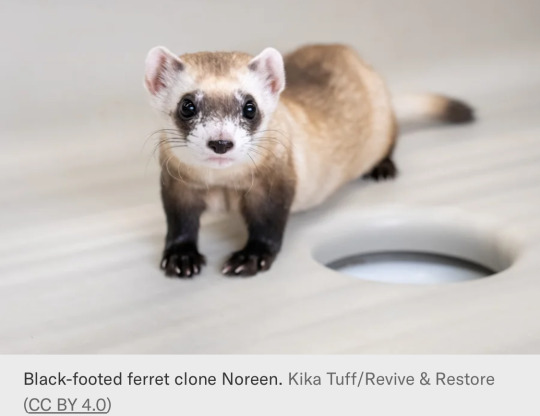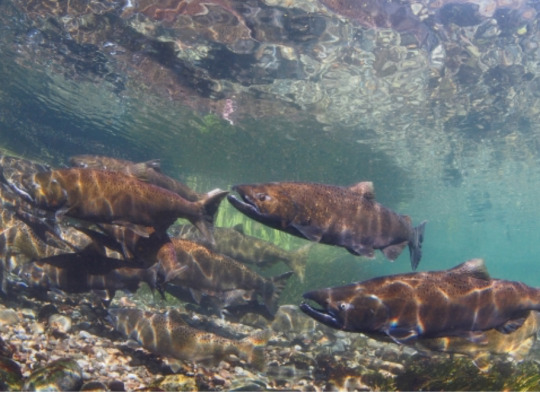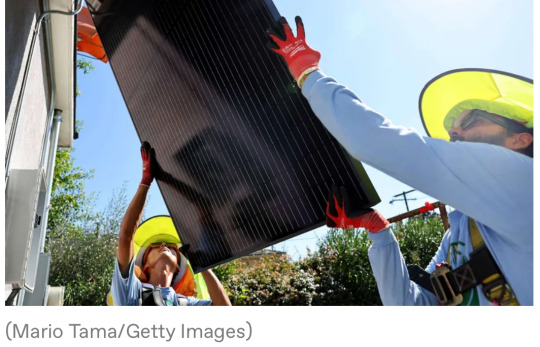#Sustainable Solvents
Explore tagged Tumblr posts
Text
Green & Bio-solvents Market Size to Expand Significantly by the End of 2030
As the world turns its focus towards sustainability and environmental consciousness, the chemical industry is experiencing a paradigm shift. One of the most promising developments in this space is the rise of the Green & Bio-solvents Market. Green solvents, often derived from renewable resources like plant materials, and bio-solvents, designed to reduce environmental impact, are redefining how industries approach solvent use. This shift is not only vital for minimizing pollution but also offers significant opportunities for businesses to adopt eco-friendly alternatives.
What are Green and Bio-solvents?
Green solvents are environmentally friendly alternatives to traditional solvents, which are often derived from petroleum-based resources and can be harmful to both human health and the environment. Bio-solvents are a subset of green solvents and are typically derived from renewable biological sources, such as corn, sugarcane, or other agricultural by-products. These solvents are designed to break down more easily in the environment, reducing toxic residues and harmful emissions.
Read More about Sample Report: https://intentmarketresearch.com/request-sample/green-bio-solvents-market-3514.html
Common types of green and bio-solvents include:
Bioethanol
Lactic Acid
Ethyl Lactate
D-Limonene
Glycerol
Market Overview and Growth Drivers
The global green & bio-solvents market is growing at a rapid pace, driven by a combination of regulatory pressures, consumer demand, and corporate sustainability initiatives. Several factors contribute to the expanding market:
Stringent Environmental Regulations: Governments and regulatory bodies worldwide are implementing stricter environmental regulations, pushing industries to move away from traditional solvents that are volatile organic compounds (VOCs) and contributors to pollution.
Rising Demand for Eco-friendly Products: Industries such as pharmaceuticals, agriculture, paints and coatings, and food processing are adopting green solvents to meet consumer demands for sustainable and environmentally friendly products.
Technological Innovations: Advances in biotechnology and green chemistry are leading to the development of more efficient and cost-effective bio-solvents, making them more competitive with traditional solvents.
Growing Awareness of Health and Environmental Hazards: Traditional solvents are often associated with negative health effects, such as respiratory problems, skin irritation, and long-term toxicity. Bio-solvents offer a safer alternative for workers and the environment.
Key Industry Applications
Paints & Coatings: One of the largest markets for bio-solvents, these are used as replacements for petroleum-based solvents in paints, inks, and varnishes. Bio-based solvents help reduce harmful emissions of VOCs, making the production and application processes safer.
Pharmaceuticals & Cosmetics: The pharmaceutical industry benefits from bio-solvents in drug manufacturing, where purity and safety are critical. Bio-solvents are also increasingly popular in cosmetics, where consumers prefer natural, chemical-free products.
Agrochemicals: Bio-solvents are used in pesticide formulations to reduce the toxic load on the environment. They help in making agrochemical production greener and more sustainable.
Cleaning & Degreasing Products: Green and bio-solvents are key ingredients in biodegradable cleaning products. They offer effective cleaning without the negative environmental impacts of traditional chemical solvents.
Regional Insights
The green and bio-solvents market is growing worldwide, but some regions stand out:
North America: The U.S. and Canada are leading in terms of innovation and adoption, with stringent environmental policies driving the shift towards green chemicals. The presence of major bio-solvent producers is also boosting the market.
Europe: Europe, especially countries like Germany and France, is at the forefront of adopting sustainable solutions. The European Union's strong environmental regulations and consumer preference for eco-friendly products contribute to the growth in this region.
Asia-Pacific: The APAC region, particularly China and India, is experiencing a surge in demand for bio-solvents due to their large industrial sectors. Government initiatives promoting sustainability are fostering the growth of this market.
Ask for Customization Report: https://intentmarketresearch.com/ask-for-customization/green-bio-solvents-market-3514.html
Challenges Facing the Market
Despite its promising future, the green & bio-solvents market faces several challenges:
High Production Costs: Bio-solvents are often more expensive to produce than traditional solvents, making them less attractive to cost-sensitive industries.
Limited Awareness: In some regions, the benefits of green and bio-solvents are not widely understood, which can limit market penetration.
Performance Gaps: While bio-solvents are improving, they may not always match the performance of traditional solvents, particularly in specialized industrial applications.
The Road Ahead
The future of the green & bio-solvents market is promising, with continued growth expected as industries, governments, and consumers push for more sustainable practices. Ongoing research and development will likely lead to further innovations that improve the efficiency, cost-effectiveness, and performance of bio-solvents.
As the world continues to grapple with environmental challenges, the shift toward green chemistry and the broader adoption of bio-solvents represent a crucial step in reducing our chemical footprint. In an era where sustainability is no longer optional but essential, the green & bio-solvents market is set to play a pivotal role in shaping the future of multiple industries.
0 notes
Text
UV printing is the latest game-changer, but can eco-solvent printing keep up? Let’s dive into the details before this discussion becomes dry.
The green factor
Eco-solvent printing has fewer emissions but still impacts the environment and needs proper disposal. Ensure good ventilation indoors
Unlike traditional methods UV printers don’t release harmful chemicals when they dry.
At the first blink
Eco-solvent and UV prints differ noticeably at first glance
1.Embossing and Gloss:
Eco-solvent prints come in matte or semi-gloss. High gloss needs extra laminates, and embossing isn't available.
Meanwhile, most UV prints are delivered directly from the printer with a high-gloss finish and embossing features.
2.Color and sharpness:
Sure, eco-solvent ink gets the job done with decent colors, but it lacks white and can't print on black items, nor does it offer laser-sharp details.
UV inks dry instantly to produce vivid colors and razor-sharp lines with the added benefit of white.
The gold standard
1.Durability:
more protective coatings may be required to improve durability for a eco solvent ink print.
The prints made by UV are very hardy, resistant to scratch, fading, and weather. The ink is more resistant to environmental factors.
2.Versatility:
Eco solvent ink printers can only support some media and have problems with some surfaces.
UV printers work with a variety of rigid and non-porous materials without the requirement for any additional coatings.
Opinion In brief, UV prints are quick, versatile, and eco-friendly, whereas eco-solvent prints are slower and still contain some polluting compounds. Next time you're ordering prints, be sure to ask if they're UV or not. Got printing questions? Our team is ready to help you find the perfect solution. Contact us today and say goodbye to confusion!Lets talk
🌐 www.burjgraphic.com
2 notes
·
View notes
Text

You know you want to use them, but man do they just not work how you want them to yet, do they?
___ Follow for more memes from the GLAM world 🖼📙🗄🏛
GLAM - 🖼Galleries📙Libraries🗄Archives����Museums . . .
#conservation#preservation#collections#conservators#museums#conserve#art#collectionscare#careofcollections#materials#preserve#paintingconservation#paintingconservators#sustainability#solvent#green#restoration#cleaning#varnish#meme#memedaily#museummemes#museum
3 notes
·
View notes
Text

Metal Extraction Via Hydrometallurgy
Driving excellence in non-ferrous metal extraction through hydrometallurgy. Discover how our tailored solutions can enhance your extraction process while reducing environmental impact.
For more info, visit https://www.saumitgroup.com/
#SaumitGroup#Hydrometallurgy#MetalExtraction#Sustainability#MetalRecovery#MineralProcessing#solvents#nonferrousmetals
0 notes
Text
Learn essential waste management practices for chemical manufacturing from A-Gas Electronic Materials. This guide covers waste minimisation, segregation, recycling, safe storage, and compliance. Enhance sustainability and efficiency in your operations.
#waste management#chemical manufacturing#waste minimisation#waste segregation#recycling#safe storage#regulatory compliance#hazardous waste#solvent recovery#A-Gas Electronic Materials#UK#sustainability#industrial waste#chemical waste disposal#waste treatment#environmental regulations
0 notes
Text

Refining Waste: Ceresana Expects Growth in the Global Market for Biobased Solvents
Water is the best solvent, but it can't do everything. Whether it's liquefying acrylic paints, removing nail polish or even removing asphalt residue, strong chemicals are often needed. Increasingly, industrial solvents are no longer made only from coal, crude oil or natural gas, but from renewable raw materials. To reduce the ecological footprint, biogenic components are also increasingly being added to conventional petrochemical solvents. Ceresana's new market report "Biobased Solvents" forecasts that the production volume of biosolvents will increase significantly: Analysts expect annual growth of 3.4% worldwide, and more than 5% in Asia. Sales generated with biosolvents are expected to rise to around USD 8.9 billion worldwide by 2032.
Further information about the new market report “Biobased Solvents“: https://ceresana.com/en/produkt/biobased-solvents-market-report-world
#solvents#sustainable#chemcials#producers#markets#demand#industry#market study#manufacturers#production
1 note
·
View note
Text
Green & Bio-Solvents Market: Sustainable Solutions for a Cleaner Future
The total size of the green & bio-solvents market was USD 3,128.5 million in the past, and it will propel at 6.1% CAGR in the years to come, to reach USD 5,322.2 million by 2030, as per P&S Intelligence. The industry development is credited to the and environmental and health concerns related to synthetic solvents. Paints & coatings dominated the industry in the past, with around USD 1.2…

View On WordPress
#Bio-based solvents#Biodegradable solutions#Chemical sector#Clean manufacturing#Eco-conscious industries#Eco-friendly alternatives#Environmental innovation#Green chemistry#Green solvents#Green technology#Industrial applications#Low carbon footprint#market growth#Regulatory compliance#Renewable resources#Solvent industry#Solvent market trends#Sustainable chemistry#Sustainable sourcing
1 note
·
View note
Text

Environmental Cleanup: Bioremediation as an Eco-Friendly Solution
Bioremediation is an eco-friendly approach that uses microorganisms or their enzymes to clean up environmental pollutants. It is a sustainable and cost-effective method to treat contaminated soil, water, and air. Bioremediation can be applied to a variety of pollutants, including petroleum, pesticides, and solvents. The process involves various biochemical reactions, microbial interactions, and environmental factors.
The principles of bioremediation are based on the natural processes of microbial degradation and plant uptake. Microorganisms have evolved to use various organic compounds as sources of energy and nutrients. They have a diverse range of enzymes that can break down complex molecules into simpler forms that can be utilized by the cell. In bioremediation, microbial degradation is enhanced by adding nutrients, oxygen, and other growth-promoting factors to the contaminated site. This can be achieved by various techniques, such as bioaugmentation, biostimulation, and phytoremediation.
There are several types of bioremediation techniques that can be applied to different types of pollutants and environments. The most common ones are in situ bioremediation, ex situ bioremediation, bioventing, biosparging, and bioreactors.
Bioremediation has been applied to a wide range of environmental pollutants and industries. Petroleum, heavy metal, pesticide, industrial waste, and landfill leachate contamination are some of the common applications of bioremediation.
Compared to traditional remediation techniques, such as excavation and incineration, bioremediation offers several benefits. It is sustainable, cost-effective, versatile, and non-invasive. Therefore, bioremediation is a promising eco-friendly solution for environmental cleanup.
#Bioremediation#Microorganisms#Environmental pollutants#delta remediation#Sustainable approach#Cost-effective cleanup#Contaminated soil#Contaminated water#Contaminated air#Petroleum#Pesticides#Solvents#Bioaugmentation#Biostimulation#Phytoremediation#In Situ Bioremediation#Ex Situ Bioremediation#Bioventing#Biosparging#Bioreactor#Heavy metal contamination#Landfills#Industrial waste#Sustainable cleanup#Non-invasive techniques#Versatile approach#Ecosystem-friendly solutions#Environmental sustainability
0 notes
Note
thoughts on rayon, viscose, lyocell, that kinda thing?
Semi-synthetic cellulose derivatives like rayon are fascinating to me from a textile science pov (its the oldest “synthetic” fabric) and i think they can feel quite nice, especially woven rayon to imitate silk (i don’t like semi-synthetic knits as much, they feel too slick in a way i don’t like but i see how it can be appealing) but I think with lots of brands being like look we’re using ✨natural cellulose from trees✨ or ✨bamboo✨(etc.) it’s all very greenwashy and most of the time they put a green leaf symbol on the tag and call it sustainable fashion without telling you about the solvents used to dissolve the cellulose, which more often than not are not very good for the earth. Also the increased popularity of wood based cellulose derivatives has led to higher rates of deforestation. That said, some 1940s and 1990s (specifically these decades imo) rayon dresses are just sooo good. Pretty much like everything else, there’s pros and cons and the outtake is just to buy used/second-hand garments whenever possible 💘
19 notes
·
View notes
Text

Catalysts show potential for breaking down microplastics to create usable fuel
Microplastics, plastics smaller than 5 millimeters, are littered across the world, contributing to global warming, disrupting food chains, and harming ecosystems with toxic chemicals. This is why Dr. Manish Shetty is working to break down plastics before they can get into the environment. Creating sustainable chemicals and developing better waste management will contribute to better sustainability. This research is part of figuring out how to make green hydrogen available for waste management using catalysts. Shetty's research uses solvents in low amounts that also act as hydrogen sources to break down a specific class of plastics called condensation polymers, which include polyethylene terephthalate (PET) bottles, packaging, textiles, and 3D printing.
Read more.
#Materials Science#Science#Microplastics#Plastics#Polymers#Environment#Catalysts#Fuel#Reactions#Texas A&M
25 notes
·
View notes
Text
In a major stride towards sustainable industrial fermentation, a team of researchers at Delft University of Technology (TU Delft) in The Netherlands, has unveiled pioneering advancements in the purification of isopropanol and acetone from the fermentation of waste gases. The study, published in the Journal of Chemical Technology and Biotechnology, introduces novel processes that promise to elevate the efficiency and viability of large-scale production. Isopropanol and acetone have a combined global market of $10 billion. Both chemicals are important industry solvents, and isopropanol also has significant applications as a pharmaceutical ingredient due to its low toxicity. Conventional production relies on fossil carbon-dependent methods, which are becoming less favorable as stricter environmental regulations come into place.
Continue Reading.
67 notes
·
View notes
Text
Megsy Baby's investments by u/Human-Economics6894
Megsy Baby's investments Megsy Baby just reappeared at an "event", the launch of a new hair care line from the brand Highbrow Hippie, co-founded by her close friend and Hollywood colorist, Kadi Lee and hairstylist Serge Normant, who styled Megsy's hair for the wedding ceremony in 2018https://ift.tt/sToxrPe, pay thousands of dollars to look like a hippie. Seriously, the day I see Megsy Baby wearing a shirt with the image of Che Guevara, I will end this, because this woman is too absurd.Well, Megsy Baby is an investor in Highbrow Hippie.And the Mirror makes a short list of where she has invested:- 1) Clevr Blends, which sells a variety of lattes in powder form.- 2) sustainable investment company called Ethic - 3) bag company called Cesta Collective, which specializes in handwoven bags- 4) Highbrow Hippie These are the ones that appear named. According to the Mirror, she is believed to have invested in between five and ten companies.Anyone who knows about the subject, is it profitable to make these investments? Does it have any benefits? Because if it is to invest, it should be in larger, or more solvent, companies. Can anyone help with the issue of these investments? post link: https://ift.tt/JcVhQ3o author: Human-Economics6894 submitted: November 15, 2024 at 11:40AM via SaintMeghanMarkle on Reddit disclaimer: all views + opinions expressed by the author of this post, as well as any comments and reblogs, are solely the author's own; they do not necessarily reflect the views of the administrator of this Tumblr blog. For entertainment only.
#SaintMeghanMarkle#harry and meghan#meghan markle#prince harry#fucking grifters#grifters gonna grift#Worldwide Privacy Tour#Instagram loving bitch wife#duchess of delinquency#walmart wallis#markled#archewell#archewell foundation#megxit#duke and duchess of sussex#duke of sussex#duchess of sussex#doria ragland#rent a royal#sentebale#clevr blends#lemonada media#archetypes with meghan#invictus#invictus games#Sussex#WAAAGH#american riviera orchard#Human-Economics6894
7 notes
·
View notes
Text
Role models: circular economy examples in manufacturing
Circular manufacturing or circular economy is a means of production, distribution, and consumption where producers bring materials from end-of-life goods back into the economy through reuse, recycling, and recovery instead of disposing of them as waste.
1. Stora Enso Sunila Mill: a pulp-based refinery plant
Stora Enso Sunila Mill in Finland was the first in the world to extract lignin in a pulp-based refinery plant. The pulp and paper industry is one of the largest manufacturing sectors in the world. It uses 12-15 percent of the wood from forests, which could double by 2050, according to the World Wildlife Fund (WWF).
To make the most of the wood they use, Stora Enso Sunila Mill, which owns one of the most extensive private forests in the world, has adopted the circular economy by reusing, recycling, and recovering materials at the mill.
The business sources pulp from their sustainably managed private forests to make paper and packaging to replace plastic. They also produce circular industrial products that are alternatives to fossil fuel-based non-renewable products
2. ReSolved Technologies: Closed-loop plastic recycling
A Dutch startup, ReSolved Technologies, has developed a closed-loop recycling solution for engineering plastics in electronic devices and automobiles.
Engineering plastics are complex and contain additives that make recycling difficult. 95 per cent of these plastics are downcycled, incinerated, or landfilled.
ReSolved Technologies’ solvent-based recycling technique removes additives like fillers, flame retardants, and colourants, and separates different types of plastics. The recycled plastics are good quality and they can be used to make engineering plastics again. This technology can be used to complement existing mechanical recycling facilities for plastics.
ReSolved Technologies closes the materials loop by turning electronic waste into new electronic devices. Their plastic recycling technology prevents the extraction of fossil fuels for new production and reduces plastic waste and pollution problems.
3. Batch.Works: Smart and circular manufacturing
Another Dutch startup, Batch.Works, offers 3D printing for “Circular Manufacturing as a Service (CmaaS)” using AI-driven factories.
The company uses circular materials like recycled plastics or agricultural waste from traceable sources to make new parts for the manufacturing industry. They offer smart 3D printing to meet on-demand digital production for just-in-time manufacturing, thus reducing overproduction and waste.
The company has a take-back policy for its products to recycle materials and leverages digital warehousing services from third parties for flexibility and scaling. Its novel manufacturing model creates short supply chains to reduce transportation costs and increase agility.
The short supply chain and digital warehousing cut transport pollution and emissions, and small-batch production makes manufacturing sustainable and cost-effective for client firms.
And many more examples in the link:
#solarpunk#solarpunk business#solarpunk business models#solar punk#startup#reculture#circular manufacturing#circular economy#industrial ecosystems
6 notes
·
View notes
Text
Is Your Water Bottle Really Made From Recycled Plastic? (New York Times)
Excerpt from this New York Times story:
The plastic CamelBak bottles displayed in a Target in East Hanover, N.J., offer a promise to ecologically conscious buyers. On the front of each is a bright blue sticker with the words “Tritan Renew made with 50% recycled material.”
In reality, however, the amount of recycled plastic that went into making the bottles may be nowhere near 50 percent.
Eastman Chemical, a company with $9.2 billion in annual revenues based in Kingsport, Tenn., introduced the durable plastic called Tritan Renew four years ago, telling manufacturers that it was made with “up to 50 percent recycled content from waste plastic.” It quickly caught on with companies trying to reach their sustainability goals or eager to appeal to consumers who want to keep plastics out of landfills and oceans.
Dozens of brands now use the material. CamelBak and Nalgene use it in sports water bottles. Ferragamo offers Tritan Renew sunglasses. Stanley Black & Decker even made a new power tool line called Reviva from the plastic. But there is no guarantee that any particular bottle, pair of sunglasses or power tool actually contains recycled plastic.
“It could be a very low percentage that is physically in there; it could be a high percentage,” said C. Jason Pierce, a senior technical leader for the Circular Economy and Life Cycle Assessment at Eastman Chemical, when asked this spring about the amount of recycled plastic in Tritan Renew that is used to make water bottles sold by CamelBak and others. “You can’t know how much.”
So how does Eastman make its claim that Tritan Renew contains up to 50 percent recycled material? It uses a green certification system called “mass balance.”
That methodology allows companies like Eastman to build up credits for recycling plastic and then apply them to the manufacture of any number of products, regardless of how much recycled material they contain. (More on this later.)
Critics argue that mass balance accounting opens the door to corporate greenwashing and creates a system where consumers don’t know whether or how much recycled material was used in products that claim to be sustainable or “green.”
“If you divorce the recycled content from the physical product, and just start using these accounting schemes, you destroy consumer confidence in recycling,” said Lee Bell, a policy adviser to the International Pollutants Elimination Network, a global network of advocacy groups that works on pollution issues. “It effectively destroys truth in labeling.”
That view, the company argues, takes too narrow a perspective. Consumers can be assured “that they are directly supporting recycling that really did happen,” Mr. Pierce said. “Materials that would have otherwise gone to the landfill or incinerator are being recycled. It’s just a little bit of a different way of thinking about recycling. More of a bigger picture or systems view of it. ”
To grasp what mass balance accounting entails, you first have to know a bit about the two methods of plastic recycling.
The first, which has been around for decades, involves sorting, washing, shredding and melting down plastic waste and reshaping it into pellets. Much of the recycled plastic produced by this method, called mechanical recycling, is of lesser quality than the original. And only certain types of plastics can be recycled mechanically.
The second, newer method, chemical recycling, is an energy-intensive process that typically uses high temperatures, pressurization and chemical solvents or other chemical processes not to simply melt plastic but to break it down into its chemical building blocks. The recycled chemicals are then mixed with all sorts of other materials, including fossil-fuel-derived virgin plastic, to make new products.
This year, Eastman began operating one of the largest chemical plastic recycling plants in the world. Near the company’s headquarters in Tennessee, the plant uses methanol, heat and pressure to transform plastic waste. It takes plastics not accepted in most curbside recycling programs, like clamshell containers, colored plastics used in food and beverage packaging, and plastic fibers used in carpets and textiles.
Eastman wants to be able to market as recycled the products made with this material. But while it’s theoretically possible to physically track plastic pellets from recycled water bottles to a new life as plastic lawn furniture, it’s virtually impossible to trace basic chemicals dissolved from plastic waste and mixed with other materials to any particular batch of plastic products.
4 notes
·
View notes
Text
In Kenya, people took to the streets to protest tax hikes to pay for foreign debt. In Sri Lanka, a takeover of the presidential palace was followed by the election of a new government aiming to renegotiate Sri Lanka’s International Monetary Fund (IMF) loan. In Argentina, there’s been a record increase in poverty and hunger as the government pursues austerity to free up cash and pay off debt to the IMF. These are three of almost 80 countries currently in or at risk of debt distress, and most of them are highly climate-vulnerable. In the context of a simultaneous climate and development crisis, high debt payments are a direct obstacle to countries’ abilities to fund essential public services, tackle climate change, and invest in sustainable development. External shocks such as the U.S. Federal Reserve’s 2022-2023 interest rate hikes, combined with a slow recovery from the COVID-19 crisis, have exacerbated debt burdens around the world. And one global institution is absolutely crucial to making debt relief viable in the short term: the IMF.
Atop the international monetary hierarchy, the IMF is the head of the creditors’ cartel. Not only is it a gatekeeper for other supranational lenders; it also functions as a seal of approval for countries to gain access to capital markets. Created to rebalance countries’ balance-of-payments crises, it can even issue a type of international money called Special Drawing Rights (SDRs). Without counting this, it has a trillion dollars of lending power, plus a quarter-trillion-dollars’ worth of gold reserves. In recent years, though, the IMF has diverged from its obligation to support countries in need. Though it has increasingly relied on fees from its more distressed borrowers, over the last 12 months it made a record-breaking $6.8 billion in earnings.
As the fund’s yearly fall meetings are about to begin on Oct. 21, we propose five quick fixes for the IMF, all of which require minimal paperwork and will help get effective relief and climate funds to developing countries. Despite important strides over the last few years, the IMF is still stuck in old ways of austerity and conditionality. The institution is out of sync with the climate emergency and needs to change.
1. Immediate debt relief through the elimination of surcharges
Just as with hidden fees charged by credit cards, dozens of countries have due to surcharges paid the IMF much higher interest rates than those advertised. The institution’s own historical precedents show that bold moves, such as removing these fees, are possible. After prolonged pressure from economists, policymakers and civil society groups, the Fund recently reformed the policy to lower the fees—but didn’t go far enough. Had the IMF board scrapped surcharges, the developing world would have seen up to $13 billion in additional relief over the next decade. Highly indebted countries will continue to face an unnecessary burden and obstacle to development.
The Fund argues these surcharges are a disincentive for large and prolonged borrowing. Some rich countries’ board members opposed full elimination of the policy because they claimed the income derived from these extra fees could pay for concessional rates for loans mainly issued to low-income African and small island states. Beyond the fact that, decades ago, rich countries committed to subsidizing these loans’ low interest rates, the IMF does not need the extra income to fund this subsidy. Boasting a trillion dollars of lending capacity, the powerful IMF can cover this subsidy by freeing up cash from its retained earnings as well as conducting a partial accounting revaluation of its gold reserves. In short, the IMF is solvent enough to forego surcharge income and provide full relief from surcharges to its debt-distressed members before the next review.
2. A new issuance of SDRs
The IMF has a special unit attached to it called the Special Drawing Rights Department. It has its own balance sheet, and with the mandate from its members, it can issue and allocate international currency. American legislation allows the U.S. Treasury to vote at the IMF for an expedited issuance worth up to $650 billion. This issuance would not cost the United States—or any government, for that matter—a single penny. It is a zero-tax, deficit-free, debt-free, and conditionality-free way to support countries in distress without the lengthy political delays of budget appropriations.
The main use for foreign exchange is to pay for international transactions, primarily imports of goods and services. While 41 rich countries and China would get two-thirds of SDRs and generally would not use them, over 150 developing countries would get around $200 billion worth of SDRs, and most of them would certainly use them to pay for imports. This would boost international trade and stimulate U.S. exports. A recent study shows that hundreds of thousands of export-related jobs in the United States can be preserved or created from an SDR issuance of this magnitude.
Together with this issuance, the United Nations can decide that all UN agencies’ statistics, reports, and accounting are denominated in XDR—the international standard symbol for the SDR, the currency of the IMF, which is, let’s not forget, a UN institution. This will promote the use of SDRs and will incentivize countries to donate them for climate purposes.
3. Invest the IMF’s portfolios in African and Latin American green bonds
The IMF has unused cash on hand for about $405 billion. It has an additional $42 billion invested in the stock market, mainly in rich countries’ blue chip stocks, corporate bonds, and sovereigns. Why not have the IMF increase its portfolio and invest it in top-rated green bonds issued by regional development banks such as the African Development Bank and the Development Bank of Latin America? The usual argument is that the IMF has to follow legacy risk models biased in favor of rich-country markets, but this is shortsighted as it is a globally systemic institution—it doesn’t have to follow markets; it has to make them. This is an opportunity for unused cash at the IMF to instead be put to productive use through climate-oriented, real-life projects.
4. Fix the IMF’s new climate fund
The IMF’s managing director, Kristalina Georgieva, is an environmental economist. She was successful in creating a trust fund at the IMF that is the closest thing to an IMF climate fund: the Resilience and Sustainability Trust. However, old habits die hard, and its framework was problematic from the start. While its 20-year loans are at lower rates than the conventional 10-year IMF loans, they are full of counterproductive conditionalities linked to regular austerity-filled IMF programs and are arbitrarily capped at $1.3 billion per country. The IMF can quickly fix this by tweaking its inertial habits: scrapping the harmful conditionality, delinking it from conventional IMF loans, and removing the arbitrary cap.
5. Fast-track congressional approval for a quota increase
The U.S. government hosts the IMF in Washington and with veto power it is the most important voice at the IMF. The role of the United States is crucial in getting these quick fixes underway. For this next fix, congressional approval will be required.
The IMF’s solvency depends on its members’ quotas, its yearly profits and borrowing agreements with rich countries. The IMF had approved a quota-funding round from its members in 2010, but it was concluded only in 2016—mainly because of a slow U.S. Congress that resisted a small change in voting power. Voting power is defined according to a formula that largely rewards economic size. Per the latest round approved in 2023, the distribution of voting power will remain the same, but countries are required to proportionally increase their quotas to the IMF. In order to comply with the latest round, it is estimated that rich countries will provide around $225 billion, but mostly in their own currencies. Meanwhile, developing countries will have to seek $25 billion in U.S. dollars, with the difference in local currency promises. U.S. congressional approval for the new funding round should be accelerated.
However, for a subsequent round, it is imperative that the IMF opens a discussion on the formula. Economic power shouldn’t go unchecked by climate responsibilities but should include a climate variable that can interact with economic size. We propose including countries’ historic greenhouse gas emissions in the denominator of that formula.
Out of all these measures, only the increase in quotas requires congressional approval. Everything else can be done quickly and for free, with the voting power and influence of the U.S. Treasury representative at the IMF. It is preferable for the United States to lead these reforms, which will realign the fund with its foundational principles and purpose—especially in the context of the climate emergency and a necessary green transition.
4 notes
·
View notes
Text
Good News - April 22-28
Like these weekly compilations? Support me on Ko-fi! Also, if you tip me on here or Ko-fi, at the end of the month I'll send you a link to all of the articles I found but didn't use each week - almost double the content! (I'm new to taking tips on here; if it doesn't show me your username or if you have DM's turned off, please send me a screenshot of your payment)
1. Millions Of Maggots Donated To Charity In Honour Of The Maggot King

“[Blizzard Entertainment] donated millions of maggots to Tiggywinkles UK, a leading wildlife hospital, […] in honor of Duriel, the Maggot King, a notorious character in the Diablo series. […] This significant contribution is expected to feed the patients at Tiggywinkles for two years.”
2. New circuit boards can be repeatedly recycled

“A team led by researchers at the University of Washington developed a new PCB that performs on par with traditional materials and can be recycled repeatedly with negligible material loss. Researchers used a solvent that transforms a type of vitrimer—a cutting-edge class of sustainable polymers—to a jelly-like substance without damaging it, allowing the solid components to be plucked out for reuse or recycling.”
3. How a Cloned Ferret Inspired a DNA Bank for Endangered Species

“This black-footed ferret (Mustela nigripes) [is] the first endangered species in the U.S. to ever be successfully cloned […] from [a] cryogenically preserved cell line, obtained from a ferret named Willa, who lived in Wyoming in the 1980s. [… T]he FWS [is now] on a major project to cryogenically store tissue from every endangered species in the U.S., [… as] “an insurance policy against future loss of biodiversity in the wild.””
4. Maine Signs Trans And Abortion Sanctuary Bill Into Law, Despite Violent Threats

“[The new law] states that criminal and civil actions against providers and patients are not enforceable if the provision or access to that care occurred within Maine’s borders, asserting jurisdiction over those matters. It bars cooperation with out-of-state subpoenas and arrest warrants for gender-affirming care and abortion that happen within the state.”
5. $70M for Fish Passage Projects Address Climate Resilience, Strengthen Local Economies

“The Department of the Interior today announced more than $70 million […] that will improve fish passage around […] barriers fragmenting the nation’s rivers and streams [… as an] “investment to restore our nation’s rivers and streams, safeguard endangered fish species, protect Indigenous subsistence practices and provide communities with increased opportunities for outdoor recreation and economic growth,” said Secretary Deb Haaland.”
6. A Golden Age of Renewables Is Beginning, and California Is Leading the Way

“California—the fifth-largest economy in the world—has experienced a record-breaking string of days in which the combined generation of wind, geothermal, hydroelectric and solar electricity has exceeded demand on the main electricity grid for anywhere from 15 minutes to 9.25 hours per day.”
7. Collaborative conservation efforts keep lake sturgeon off the endangered species list

“The Service’s 12-month finding [that these sturgeon are not endangered] shows ongoing management efforts, such as fish stocking, have contributed to the conservation and resiliency of the species. “Today’s announcement shows the power of collaborative conservation and the impact it can have for species like the lake sturgeon,” said Midwest Regional Director Will Meeks.”
8. French municipalities bordering Luxembourg to offer free transport to commuters
“Luxembourg is the only country in the world to offer entirely free public transport. […S]ix French communities located near the border and many of whose residents work in Luxembourg have decided to band together and also offer a free shuttle for daily workers. […] Last year, governments in the two countries said they would work to increase train services to run every 10 minutes between Metz and Luxembourg City by 2030. There’s also a plan to extend Luxembourg City’s tram service to reach all the way to the border – a trip that would take only 30 minutes when ready.”
9. Solar is about to get a lot more affordable for low-income households

“The EPA granted 49 state and territory awards totaling $5.5 billion, six tribal awards worth more than $500 million, and five multistate awards amounting to $1 billion. Together, the awards cover all 50 states, Puerto Rico, and the District of Columbia. All of the funding is dedicated to low-income and disadvantaged households.”
10. Amsterdam will cover cost of changing one's gender on documents

“[T]he city’s residents will be able to change the gender on their birth certificate and Basic Registration of Persons (BRP) free of charge. [… T]he local government will also reimburse (part of) the costs of a new passport, identity card or driver's license.”
April 15-21 news here | (all credit for images and written material can be found at the source linked; I don’t claim credit for anything but curating.)
#good news#hopepunk#bugs#tw bugs#diablo#wildlife#technology#recycling#ferret#cloning#dna#endangered species#trans#abortion rights#abortion#law#transgender#fish#renewableenergy#solar#geothermal#electricity#sturgeon#conservation#nature#france#public transit#low income#lgbtq#lgbtqia
6 notes
·
View notes